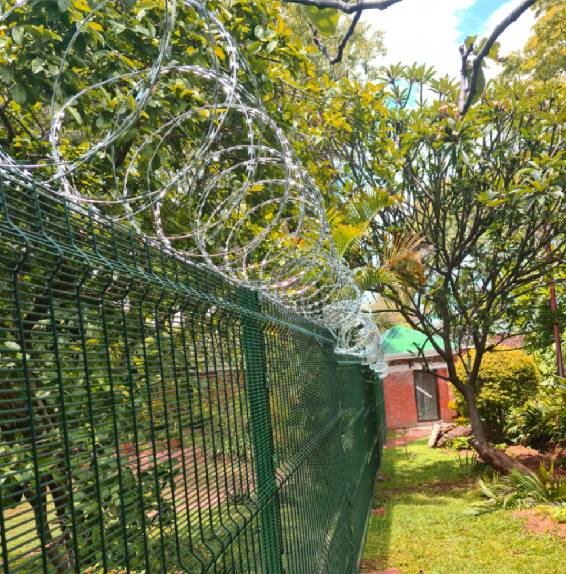High-Quality Hot Dip Galvanized Wire for Durable Outdoor Applications
Hot-Dip Galvanized Wire An Overview
Hot-dip galvanized wire is a type of wire that has undergone a galvanization process to enhance its corrosion resistance, ensuring longevity and durability in various applications. This article will delve into the properties, benefits, applications, and production process of hot-dip galvanized wire.
Understanding Galvanization
Galvanization is a process that involves coating a metal, typically steel or iron, with a layer of zinc. This is primarily accomplished to prevent rust and corrosion that can result from exposure to environmental elements. Hot-dip galvanization, as the name suggests, involves immersing the wire into a bath of molten zinc at high temperatures, creating a metallurgical bond between the zinc and the base metal.
The primary advantage of hot-dip galvanization over other forms, such as electro-galvanization, is the thickness of the zinc coating. Hot-dip galvanization provides a much thicker layer of zinc, which can withstand harsher conditions. This process also ensures complete coverage, even in hard-to-reach areas, which is crucial for ensuring longevity.
Properties of Hot-Dip Galvanized Wire
1. Corrosion Resistance The zinc coating protects the underlying metal from oxygen and moisture, which are primary contributors to rust formation. This makes hot-dip galvanized wire particularly well-suited for outdoor and marine applications where exposure to the elements is a significant concern.
2. Durability The bond created during the galvanization process provides significant durability; the coating is not only resistant to corrosion but also to physical abrasion.
3. Cost-Effectiveness While the initial costs for hot-dip galvanized wire can be higher than non-galvanized wire, the long-term savings due to reduced maintenance and replacement costs often make it a more economical choice.
4. Aesthetic Appeal The shiny, metallic finish of hot-dip galvanized wire can also add aesthetic value to structures, making it a preferred choice in visible applications.
Applications of Hot-Dip Galvanized Wire
hot dip galvanized wire

Hot-dip galvanized wire is widely utilized across various industries due to its favorable properties. Some common applications include
1. Construction In the construction industry, hot-dip galvanized wire is essential for reinforcing concrete, creating a durable framework that withstands environmental stresses.
2. Fencing Galvanized wire is commonly used for fencing solutions, including agricultural, residential, and commercial fencing. The wire’s corrosion-resistant properties ensure that it maintains structural integrity and appearance over time.
3. Automotive Components Many automotive parts are coated with zinc to prevent corrosion, contributing to vehicle longevity and reliability.
4. Wire Ropes and Cables Hot-dip galvanized steel wire ropes and cables are indispensable in applications such as lifting and rigging, where strength and resistance to wear and tear are crucial.
5. Agricultural Uses In agriculture, galvanized wire is frequently used for trellising, netting, and other applications where resilience to environmental factors is necessary.
Production Process
The production of hot-dip galvanized wire begins with preparing the metal. The steel wire is cleaned thoroughly to remove any oxides, oils, or dirt that could affect the coating process. After cleaning, the wire is immersed in a molten zinc bath, typically at temperatures around 450°C (842°F). The wire is held in the bath for a precise amount of time to ensure adequate absorption of zinc.
Once removed from the bath, the wire undergoes cooling, where the zinc forms a rigid layer on the surface of the steel. This process can be followed by additional treatments, such as passivation or chromate conversion, to enhance the coating's protective properties even further.
Conclusion
Hot-dip galvanized wire is an essential material that combines durability, corrosion resistance, and cost-effectiveness. Its broad range of applications across various industries highlights its versatility and importance in modern construction, agriculture, and manufacturing. By understanding the properties and benefits of hot-dip galvanized wire, manufacturers and consumers can make informed decisions that enhance the longevity and functionality of their projects. As industries continue to evolve, the demand for such resilient materials will undoubtedly increase, further solidifying the role of hot-dip galvanized wire in everyday applications.
-
Space-Saving Chain Fence Hacks Vertical Gardening with Cyclone MeshNewsJul.16,2025
-
Innovations in Iron Nail Wire Production for Modern ConstructionNewsJul.16,2025
-
Creative Uses of Wire Netting Fence in Modern Landscape DesignNewsJul.16,2025
-
Barbed Wire Fence Innovations in Anti-Climb TechnologyNewsJul.16,2025
-
Architectural Uses of Umbrella Nails for Aesthetic Roof DesignsNewsJul.16,2025
-
Architectural Uses of Razor Barbed Wire in Secure Urban DesignNewsJul.16,2025




